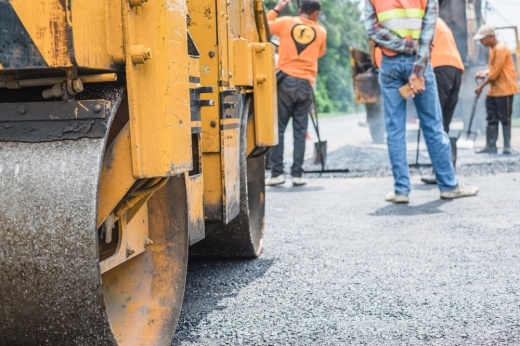A dip in peak rush-hour traffic throughout the pandemic had the unintended effect of giving construction crews more time to work on road and development projects throughout the city.
As part of its traffic management, the city of Austin Transportation Department employs an open road program, which prohibits temporary lane closures impacting more heavily trafficked roads during peak rush hours, such as 7-9 a.m. and 4-6 p.m.
However, as traffic vanished in March 2020, the need for the program disappeared, and the transportation department lifted the restrictions, giving construction workers those additional four hours during peak traffic times to work.
In 2020, the city’s development-related right of way permits increased by 6.5% compared to 2019. The 4,200 active daily permits in August 2021 also exceeded pre-pandemic figures, which typically sat around 3,000.
It is important to note the open road program only affects permitting projects on roadways owned by the city of Austin and not highways such as US 183, MoPac and I-35, said Ryan Mooney, division manager of the right of way division. The program also does not apply to roadways in the city owned by the Texas Department of Transportation, such as North Lamar Boulevard and Burnet Road.
“You might see lane closures during these peak rush hour times, and it’s possible that it might be a TxDOT-owned roadway or noncity roadway,” Mooney said.
Development speed depends on the type of project and contractor and is worth noting that not all permit projects will have sped up to the same degree due to expanded hours, Mooney said.
“Construction workers can only work so many hours in a day due to labor laws, and crews only have so many members to work,” Mooney said. “The extra hours were available for construction workers to work if they wanted to and were capable of doing so.”
Right of way permits are used for a variety of construction projects that take place on city of Austin property. They can include sidewalk cafes, filming movies or even a valet service that uses a part of a roadway. The type of project that most contributed to the spike in development was excavation permits, which can include installation of water lines and fiber-optic lines.
The transportation department reinstated the open road hours in the morning Aug. 9, and afternoon and evening hours in June, right of way engineer Darren Ujano said. This is because pre-pandemic levels of traffic are beginning to return, Ujano said.
There are many contributing factors that influence permit volume, and not one of them in particular led to the rise in permit requests, said Paloma Amayo-Ryan, program manager with the city’s transportation department.
“2020 and 2021 remained just as active in terms of right of way construction and construction permitting as past years, if not more so,” Amayo-Ryan said. “Beyond that we can say anecdotally we had a number of customers report to us that being able to work during typical open road hours prior to May of 2021 really allowed them to accelerate their construction schedules. But it’s just business as usual now.”
Editor's note: This story was updated to include a graphic which was previously missing.






